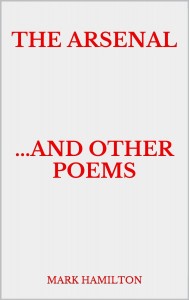 Football and poetry are not usually comfortable bedfellows and other than Dannie Abse’s heartfelt poem about his beloved Cardiff City, The Game, it is difficult to recall any serious treatment of our national sport.
Football and poetry are not usually comfortable bedfellows and other than Dannie Abse’s heartfelt poem about his beloved Cardiff City, The Game, it is difficult to recall any serious treatment of our national sport.
Of course in times of high emotion, successes and tragedies, people send poetry to the local papers, but it tends to be trite, or doggerel along the lines of, We play in red, they play in blue. They scored one, we scored two. After initial trepidation, The Arsenal…and Other Poems, however, proved to be far better and the author Mark Hamilton handles well the thoughts and feelings of the typical fan, yet also has plenty to interest the lover of poetry.
Appropriately for the clichéd game of two halves, the collection deals in the first section with Arsenal – a group of fourteen poems meant to represent the team plus three subs. The titles of these appears odd though as Arsenal VI would only have resonance for classics scholars or Romans. The second section of the Other Poems is more wide-ranging and it is fair to say more poetic and varied.
The Arsenal section is very personal dealing chronologically with successes and failures, although it is easy for any genuine football supporter to identify with the elation and despair that following a club causes. In his introduction the author admits that defeat has prompted more poems and in the section I make the record W3 D2 L10 (Arsenal VII details two defeats), which does seem to confirm the view that happiness writes white.
Centrally he handles honestly the ambivalence of a fan switching from the team, beautifully described as being, forged like artists weightless moments of pure quick grace, to fans baying, come on you fucking wankers. We’ve all been there.
On a deeper level, Hamilton cannot decide whether supporting a team is a proxy for your life, or we make our own sun, our own rain. Ultimately he is unable to decide – which probably mirrors what most fans feel – as does the eternal fundamental question of why do we put ourselves through it?
Being very subject specific, i.e. Arsenal, no doubt this is where the main appeal will lie, but there is plenty for other fans to identify with. I must admit though that I found the, nine years without a trophy, lament a bit rich, for the poor souls only finished in the top 4 every year and subsequently the Champions League too during that period.
The second half, Other Poems, is more varied and Hamilton’s talents as a poet are shown to better effect. His use of metaphor is striking at times and one feels this is real poetry rather than a mere vehicle for him to articulate his feelings for his club.
Three of the poems deal with sport and the one on snooker provides an excellent range of comparisons through such phrases as, field marshals of the baize, all of which pay tribute to the players’ skill.
In Let’s play darts! Hamilton realises the artificiality of the game, but also appreciates the skill culminating in the powerful line, so comedy explodes itself into meaning and pantomime players become great.
The final clutch of poems concern topics traditional to poetry such as the everyday beauty of the world and our relationship to it, dealing sensitively with a simple delight in nature.
My favourite is Bishop’s Stortford, Herts, whose football team remarkably had to play in Conference North for two seasons against the likes of Barrow, Harrogate and Guiseley – a lot of travelling there then.
This collection is certainly a different take on the usual football offering. Indeed the writer is a skilful poet who shows, especially in the second part, a love of language and an eye for detail which I found enjoyable.
The obvious appeal is to an Arsenal fan, but if other readers can show some tolerance there is plenty to be enjoyed. There is a saying that, intelligent writers need intelligent readers, and in terms of sales it will be interesting to see how many worthy Gooners there are out there.
Final score: 1-0 to the Ars-en-al
Ken Gambles
 Scotball is Stephen O’Donnell’s second novel following on from Paradise Road which was published in 2012.
Scotball is Stephen O’Donnell’s second novel following on from Paradise Road which was published in 2012. The cover is an oft neglected feature of a book, but in the case of Buckminster’s Ball it presents the reader to more than the standard synopsis which usually feature on the reverse of books.
The cover is an oft neglected feature of a book, but in the case of Buckminster’s Ball it presents the reader to more than the standard synopsis which usually feature on the reverse of books.
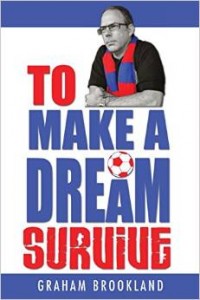 If your single source of information about football in England was SKY you’d be left with the impression that the only competition that existed was the Premier League.
If your single source of information about football in England was SKY you’d be left with the impression that the only competition that existed was the Premier League.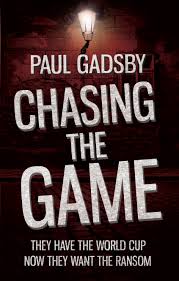 In 1966 England lost the World Cup, not as history tells us in terms of the Final in which they overcame West Germany 4-2, but the Jules Rimet Trophy itself.
In 1966 England lost the World Cup, not as history tells us in terms of the Final in which they overcame West Germany 4-2, but the Jules Rimet Trophy itself. As a football fan, the story, history and quirky facts surrounding my club are all part of what ties me to my team. And as such I do enjoy books which offer an anthology or miscellany of facts and figures. However, for them to be successful they must have integrity in terms of consistency and accuracy.
As a football fan, the story, history and quirky facts surrounding my club are all part of what ties me to my team. And as such I do enjoy books which offer an anthology or miscellany of facts and figures. However, for them to be successful they must have integrity in terms of consistency and accuracy.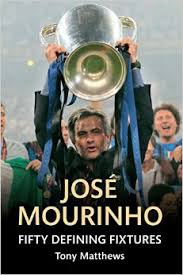 Defining: decisive; critically important
Defining: decisive; critically important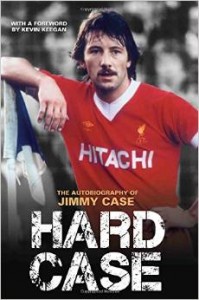 During my teenage years, Liverpool were the dominant team in England winning numerous domestic and European titles. Part of that side was Jimmy Case a Scouser with a reputation as a hard man.
During my teenage years, Liverpool were the dominant team in England winning numerous domestic and European titles. Part of that side was Jimmy Case a Scouser with a reputation as a hard man.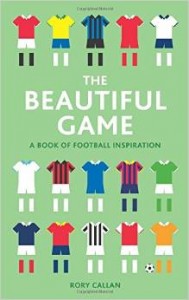 “The quotes in this book convey the motivation and inspiration of the legends and current stars of the game, in the hope that their words provide a new appreciation of why football really is The Beautiful Game.”
“The quotes in this book convey the motivation and inspiration of the legends and current stars of the game, in the hope that their words provide a new appreciation of why football really is The Beautiful Game.”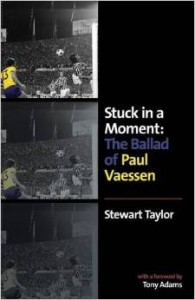 Paul Vaessen was at Arsenal Football Club from 1977/78 until 1982/83. During those six seasons he started in just 27 games first team games, with 14 additional appearances from the bench, scoring 9 goals.
Paul Vaessen was at Arsenal Football Club from 1977/78 until 1982/83. During those six seasons he started in just 27 games first team games, with 14 additional appearances from the bench, scoring 9 goals.